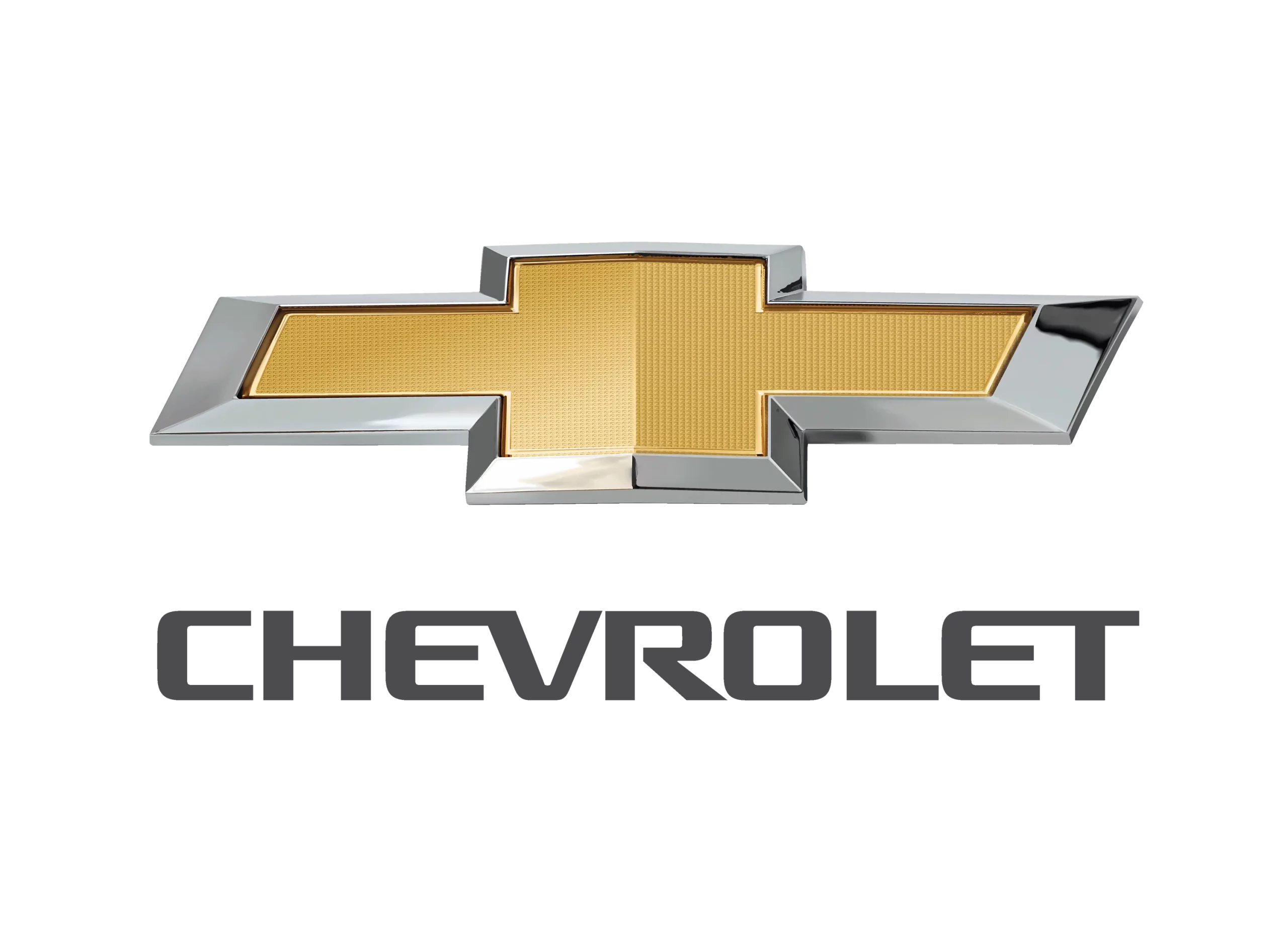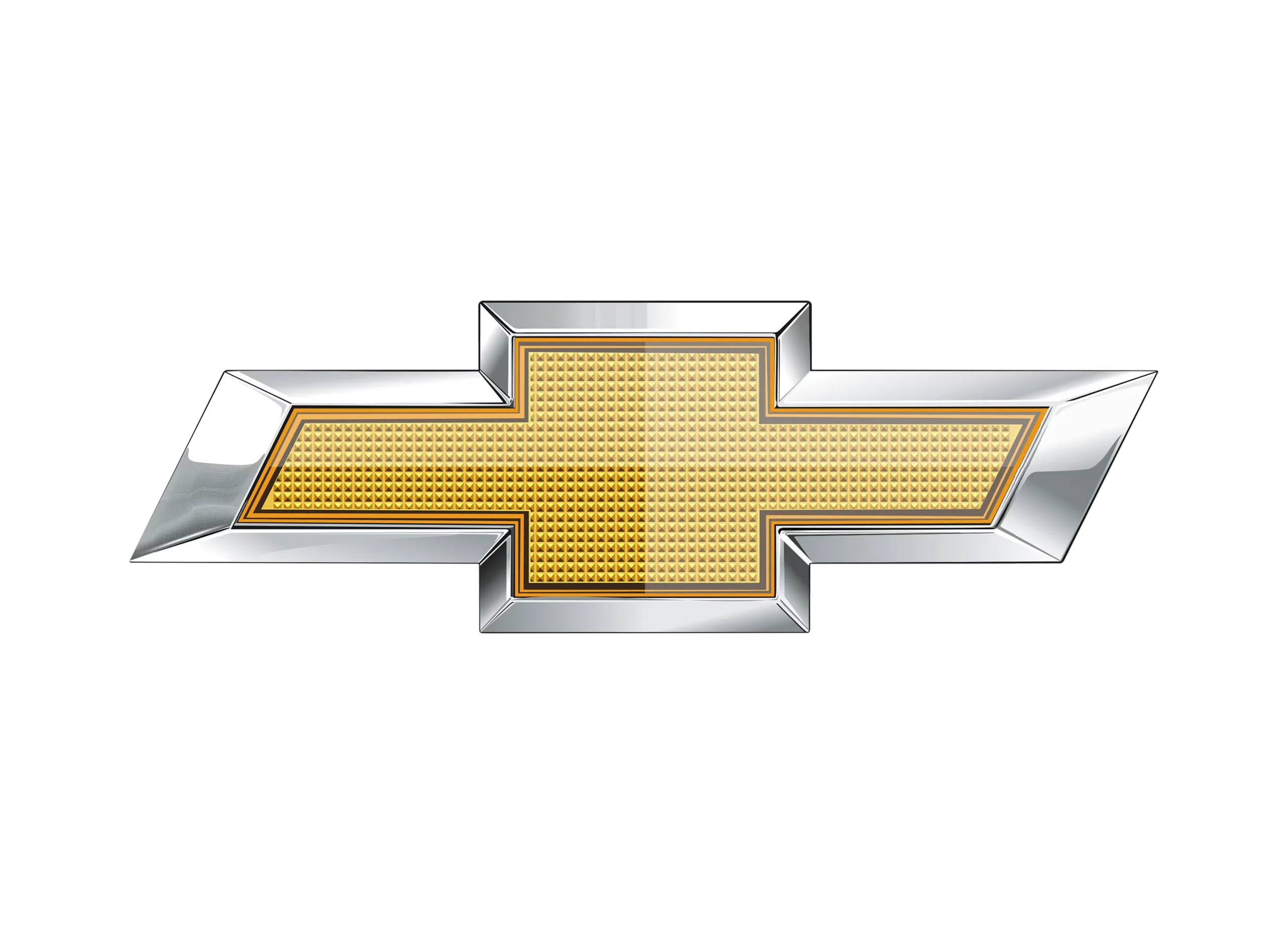Chevrolet logo

The Chevrolet logo is one of the most recognizable automotive logos in the world. It features a gold bowtie set against a field of blue, and has remained largely unchanged since it was first introduced over 100 years ago. But what does the logo actually mean? Here’s a brief overview:
The origins of the Chevrolet logo are somewhat shrouded in mystery, but there are a few theories about its meaning. One popular theory is that the bowtie shape was inspired by the wallpaper in a Paris hotel room that company co-founder William C. Durant stayed in during a business trip. The design supposedly caught his eye, and he made a sketch of it on a piece of paper, which later became the basis for the iconic logo.
Another theory suggests that the bowtie was inspired by a similar emblem used by the Swiss car company, Darracq. Durant was reportedly a fan of the Darracq logo, and may have incorporated some of its design elements into the Chevrolet logo.
Regardless of its origins, the bowtie emblem quickly became associated with Chevrolet’s brand identity, and has remained an enduring symbol of the company’s commitment to quality and innovation. The gold color is said to represent excellence and prestige, while the blue background is meant to convey trust, reliability, and dependability.
Over the years, the Chevrolet logo has undergone a few minor changes, but the basic design has remained largely the same. Today, the bowtie remains one of the most iconic and recognizable logos in the world of automotive design, a testament to the enduring popularity and influence of the Chevrolet brand.
Chevrolet Brand Overview
November 3, 1911
Arthur and Louis Chevrolet, William C. Durant
Detroit, Michigan, United States
Chevrolet is an iconic American car manufacturer that has been producing high-quality vehicles for over a century. The brand has a rich history of innovation and performance, with its founder, William Crapo Durant, establishing it as a major competitor to the Ford Motor Company.
Today, Chevrolet is part of the General Motors family and continues to produce a range of cars, trucks, and SUVs that offer advanced technology, exceptional performance, and modern styling.
Some of the brand’s most popular models include the Camaro, Corvette, Silverado, and Tahoe, all of which are known for their reliability, power, and versatility. Whether you’re in the market for a family-friendly SUV or a high-performance sports car, Chevrolet has something for everyone.
Chevrolet History
Chevrolet is an iconic American car manufacturer with a rich history of innovation, performance, and enduring popularity. Founded over a century ago by William Crapo Durant, the brand quickly became a major competitor to the Ford Motor Company and has since become a staple of American automotive culture. In this blog post, we’ll explore the history of Chevrolet and its contributions to the automotive industry.
Early History and Founding
William Crapo Durant was a successful businessman who had made his fortune in the carriage industry in the late 19th century. He was intrigued by the emerging automobile industry and saw the potential for a new kind of transportation that would revolutionize the way people lived and worked. In 1904, he founded the Buick Motor Company and quickly established it as a leading producer of affordable, reliable cars.
In 1908, Durant took over the struggling General Motors Company and began assembling a portfolio of automotive brands, including Cadillac, Oldsmobile, and Pontiac. He envisioned a company that could produce a range of vehicles to meet the needs and preferences of different customers, and he saw an opportunity to create a brand that would appeal to a wider audience than Buick or Cadillac.
Durant approached Louis Joseph Chevrolet, a Swiss-born race car driver who had worked for both Buick and Fiat, with the idea of developing a new car that would bear his name. Chevrolet was intrigued by the idea and agreed to collaborate with Durant on the project.
The First Chevrolet Cars
In 1911, the first Chevrolet cars were introduced to the market. The Chevrolet Classic Six was a six-cylinder, five-passenger touring car that featured a 299 cubic inch engine, 30 horsepower, and a top speed of 65 miles per hour. It was a luxurious, well-appointed vehicle that was priced significantly lower than similar cars from other manufacturers.
Chevrolet quickly established a reputation for producing high-quality, reliable cars that were accessible to a wider range of customers than many other brands. The company’s success was due in part to its innovative manufacturing processes, which allowed it to produce cars more efficiently and cost-effectively than its competitors.
In 1915, Chevrolet introduced the 490, a compact car that was designed to be even more affordable and accessible than the Classic Six. Priced at just $490, the car was an immediate hit and helped Chevrolet establish itself as a leader in the emerging market for affordable, mass-produced cars.
Innovations and Expansion
Throughout the 1920s and 1930s, Chevrolet continued to innovate and expand its product lineup. In 1924, the company introduced the first truck-based vehicle, the Chevrolet Series 1, which was designed for commercial use. In 1929, Chevrolet introduced the first car with an all-steel body, the Chevrolet Master Six, which was stronger, safer, and more durable than earlier models.
During World War II, Chevrolet shifted its production to support the war effort, producing a range of vehicles for the military, including trucks, tanks, and aircraft engines. After the war, the company resumed production of civilian vehicles and introduced a range of new models that incorporated the latest technological advances, including automatic transmissions, power steering, and air conditioning.
In the 1950s and 1960s, Chevrolet continued to lead the industry in innovation and style, introducing iconic models like the Bel Air, the Corvette, and the Impala. These cars featured sleek, modern designs, powerful engines, and advanced features like power windows, seat belts, and FM radios.
Recent Years
In recent years, Chevrolet has continued to innovate and expand its product lineup, introducing new models that incorporate the latest technological advances, such as electric and hybrid vehicles. The Chevrolet Volt, introduced in 2010, was the first mass-produced plug-in hybrid vehicle and has since been followed by the Bolt, a fully electric vehicle with a range of over 200 miles.
In addition to its electric and hybrid offerings, Chevrolet has continued to produce a range of high-quality cars, trucks, and SUVs that appeal to a wide range of customers. Some of the brand’s most popular models include the Camaro, Corvette, Silverado, and Tahoe, all of which are known for their reliability, power, and versatility.
One area where Chevrolet has particularly excelled in recent years is in the development of advanced safety features. Many of the brand’s newer models offer features like automatic emergency braking, lane departure warning, and blind spot monitoring, which help to prevent accidents and keep drivers and passengers safe.
Chevrolet has also embraced new technologies that enhance the driving experience, such as advanced infotainment systems that provide access to music, navigation, and other features through a touchscreen display. Some models even offer built-in Wi-Fi hotspots, allowing passengers to stay connected while on the go.
Over the course of its long and storied history, Chevrolet has established itself as a leader in the automotive industry, known for its innovative designs, advanced technology, and enduring popularity. From its early days as a pioneer of affordable, mass-produced cars to its current offerings of high-performance sports cars, electric vehicles, and advanced safety features, Chevrolet has remained at the forefront of the industry, constantly pushing the boundaries of what is possible in the world of automobiles. For those who value quality, reliability, and style, Chevrolet remains an enduring symbol of American automotive ingenuity and innovation.



















